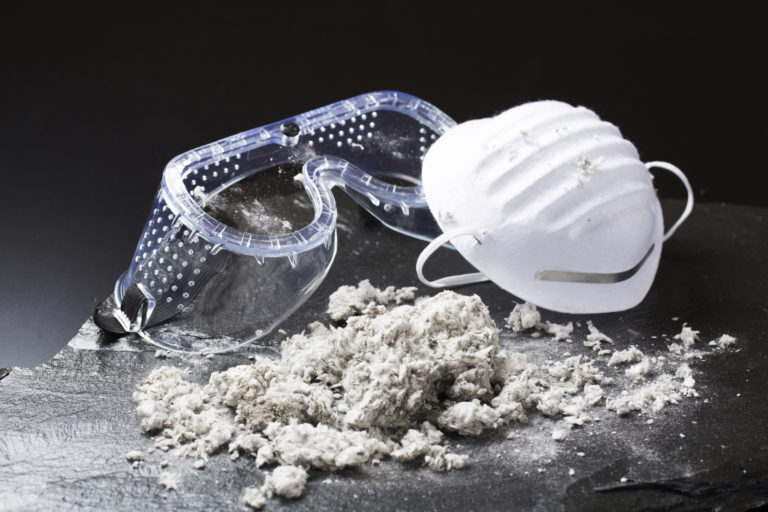Toyota Motor Co. agreed to pay a fine of $1.2 billion to the United States to put an end to the criminal investigation into safety issues. The penalty is a record-breaking fine and looks to be a prototype for how the U.S. government will resolve issues against General Motors.
U.S. Attorney General Eric Holder stated in a press conference that Toyota will admit to misleading consumers about two different problems that caused some vehicles to uncontrollably accelerate. He went on to state “we can say for certain that Toyota intentionally concealed information and misled the public about the safety issues behind these recalls.” Holder chastised Toyota saying it put its brand before the safety of its customers. The settlement agreement will suspend charges against Toyota, however Toyota must allow independent monitors to review its safety practices. Holder said that Toyota will “submit to rigorous review by an independent monitor that will examine and assess the manner in which Toyota regularly reports safety issues to the public and its regulators. This is appropriate given the extent of the deception carried out by Toyota in this case.”
Toyota still faces hundreds of lawsuits related to the acceleration problems. Toyota has already agreed to pay over $1 billion to consumers for depreciation to their vehicles because of the recall.
The settlement comes as General Motors is recalling over 1.5 million vehicles for an ignition switch failure linked to dozens of deaths. GM is also facing a criminal investigation for delays in issuing recalls.
Toyota settles with government for $1.2 billion in recall probe
Toyota to pay $1.2 billion federal penalty, criminal charges filed
Toyota Settlement Sets Bar for GM Recall
UPDATE 2/1/10 – Toyota Recall
February 1, 2010 – Toyota Announces Comprehensive Plan to Fix Accelerator Pedals on Recalled Vehicles
Toyota Motor Sales (TMS) U.S.A., Inc., today announced it will begin fixing accelerator pedals in recalled Toyota Division vehicles this week.
Parts to reinforce the pedals are already being shipped for use by dealers, and dealer training is under way. Many Toyota dealers will work extended hours to complete the recall campaign as quickly and conveniently as possible, some even staying open 24 hours a day.
On January 21, Toyota announced its intention to recall approximately 2.3 million select Toyota Division vehicles equipped with a specific pedal assembly and suspended sales of the eight models involved in the recall on January 26.
Toyota vehicles affected by the recall include:
• Certain 2009-2010 RAV4
• Certain 2009-2010 Corolla
• 2009-2010 Matrix
• 2005-2010 Avalon
• Certain 2007-2010 Camry
• Certain 2010 Highlander
• 2007-2010 Tundra
• 2008-2010 Sequoia
No Lexus Division or Scion vehicles are affected by these actions. Also not affected are Toyota Prius, Tacoma, Sienna, Venza, Solara, Yaris, 4Runner, FJ Cruiser, Land Cruiser, Highlander hybrids and certain Camry models, including Camry hybrids, all of which remain for sale.
Further, Camry, RAV4, Corolla and Highlander vehicles with Vehicle Identification Numbers (VIN) that begin with “J” are not affected by the accelerator pedal recall.
In the event that a driver experiences an accelerator pedal that sticks in a partial open throttle position or returns slowly to idle position, the vehicle can be controlled with firm and steady application of the brakes. The brakes should not be pumped repeatedly because it could deplete vacuum assist, requiring stronger brake pedal pressure. The vehicle should be driven to the nearest safe location, the engine shut off and a Toyota dealer contacted for assistance.
Detailed information and answers to questions about issues related to this recall are available to customers at www.toyota.com/recall and at the Toyota Customer Experience Center at 1-800-331-4331.
How Toyota Will Fix Recalled Vehicles
Toyota has pinpointed the issue that could, on rare occasions, cause accelerator pedals in recalled vehicles to stick in a partially open position. The issue involves a friction device in the pedal designed to provide the proper “feel” by adding resistance and making the pedal steady and stable. The device includes a shoe that rubs against an adjoining surface during normal pedal operation. Due to the materials used, wear and environmental conditions, these surfaces may, over time, begin to stick and release instead of operating smoothly. In some cases, friction could increase to a point that the pedal is slow to return to the idle position or, in rare cases, the pedal sticks, leaving the throttle partially open.
Toyota’s solution for current owners is both effective and simple. A precision-cut steel reinforcement bar will be installed into the assembly that will reduce the surface tension between the friction shoe and the adjoining surface. With this reinforcement in place, the excess friction that can cause the pedal to stick is eliminated. The company has confirmed the effectiveness of the newly reinforced pedals through rigorous testing on pedal assemblies that had previously shown a tendency to stick.
Separately from the recall for sticking accelerator pedals, Toyota is in the process of recalling vehicles to address rare instances in which floor mats have trapped the accelerator pedal in certain Toyota and Lexus models (announced November 25, 2009), and is already notifying customers about how it will fix this issue. In the case of vehicles covered by both recalls, it is Toyota’s intention to remedy both at the same time.
UPDATE 1/28/10 – Toyota recalls 8 models with defective accelerators, affecting 2.3 million vehicles.
Today, Toyota suspended the manufacture and sale of some of its most popular models because of an unresolved mechanical flaw that might cause the accelerator to get perilously stuck in the depressed position.
Toyota first announced a recall of more than 4 million cars and trucks last September, saying that driver-side floor mats could interfere with the accelerator pedal, causing vehicles to speed out of control. On Jan. 22, Toyota announced a recall of 2.3 million additional American cars and trucks, saying that the gas pedal mechanisms could wear out over time and cause the accelerator to stick or grow unresponsive.
11/3/09 – The National Highway Traffic Safety Administration has found no evidence of mechanical causes of unintended acceleration in Toyota vehicles, which has resulted in fatalities and Toyota’s largest-ever recall. NHTSA closed another study finding that the only cause of unintended acceleration was an out-of-position or inappropriate floor mat and there simply is no evidence of any other cause.
Toyota is asking owners of 3.8 million of its Camry, Avalon, Prius, Tacoma and Tundra models to remove or replace the mats has also characterized the problem of floor mat interference as an industry safety issue.
NHTSA received reports of 102 incidents in which the accelerator may have become stuck on certain Toyotas. The agency has not said how many of those incidents involved crashes. Toyota is mailing letters this week asking affected owners to make sure they have the correct driver-side floor mat for their model. If so, it must be fastened to hooks on the floor. If not, owners should remove it. Toyota also warns owners not to flip the floor mat over or place one mat on top of another.
******
The National Highway Traffic Safety Administration issued a report on September 28, 2009 warning that improperly positioned floor mats on certain Toyota models could cause the gas pedal to become stuck in full throttle.
The agency recommended that owners of the cars “immediately” remove the driver’s side factory floor mat as an “interim safety measure.” Until this problem can be corrected NHTSA is asking consumers and people who drive specific Toyota and Lexus models to take out any removable driver’s floor mat and NOT replace it with any other floor mat
About 3.8 million Toyota and Lexus models are affected, including the 2007-2010 Camry, 2005-2010 Avalon, 2004-2009 Prius, 2005-2010 Tacoma, 2007-2010 Tundra, 2007-2010 ES 350, and the 2006-2010 IS 250 and IS350.
It is being reported that Toyota engineers are currently working on a fix “besides the retaining hooks” that secure the mats to the floor. Part of the problem, is that owners may remove the mats for cleaning and put them back unsecured, or place rubber winter mats, which are much thicker than carpeted mats, on top of the standard ones.
According to the NHTSA, Toyota issued a recall for similar accelerator concerns in September 2007 for rubber “all-weather” floor mats it sold as accessories for 2007 and 2008 Lexus ES 350 and Toyota Camry models.
A fatal crash last month in San Diego in which a 2009 ES 350 was speeding out of control at more than 100 mph may have been due to a stuck accelerator, officials say, but the crash remains under investigation.
- 2007-2010 Camry
- 2005-2010 Avalon
- 2004-2009 Prius
- 2005-2010 Tacoma
- 2007-2010 Tundra
- 2007-2010 ES 350
- 2006-2010 IS 250 and IS350
NHTSA Press Release: Toyota Owners Are Cautioned About Floor Mats and Accelerator Pedal Interference



